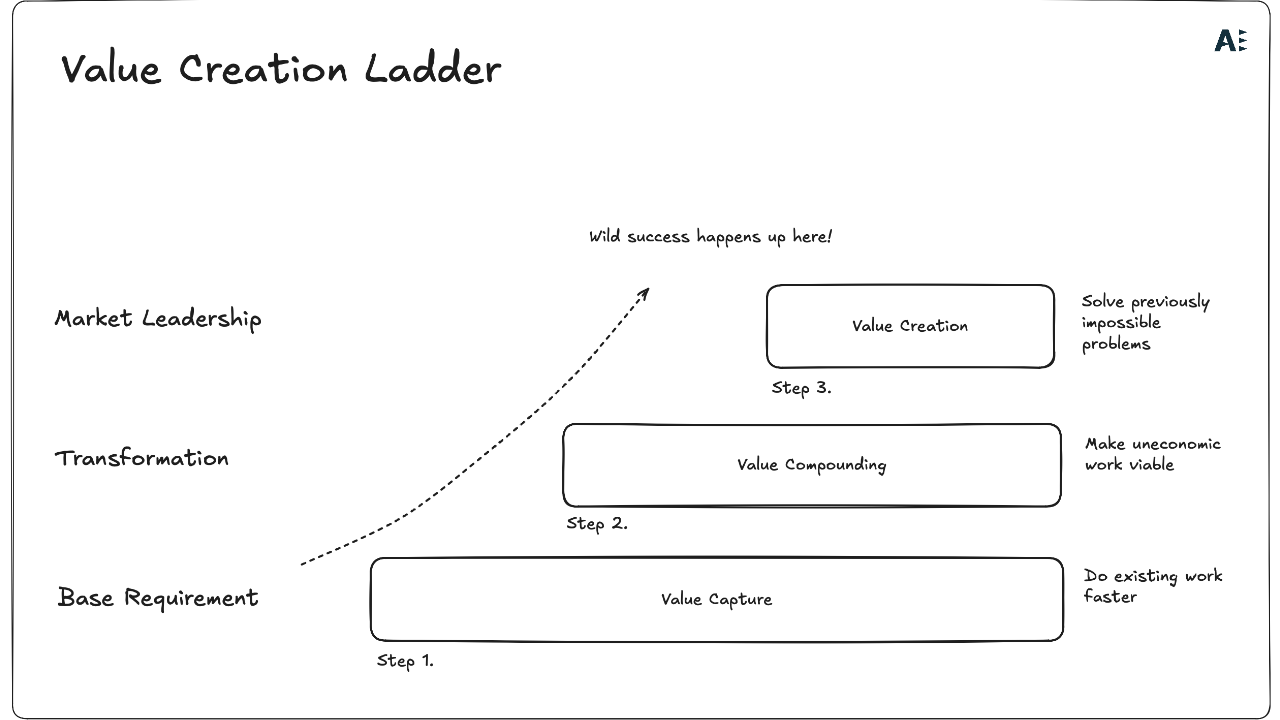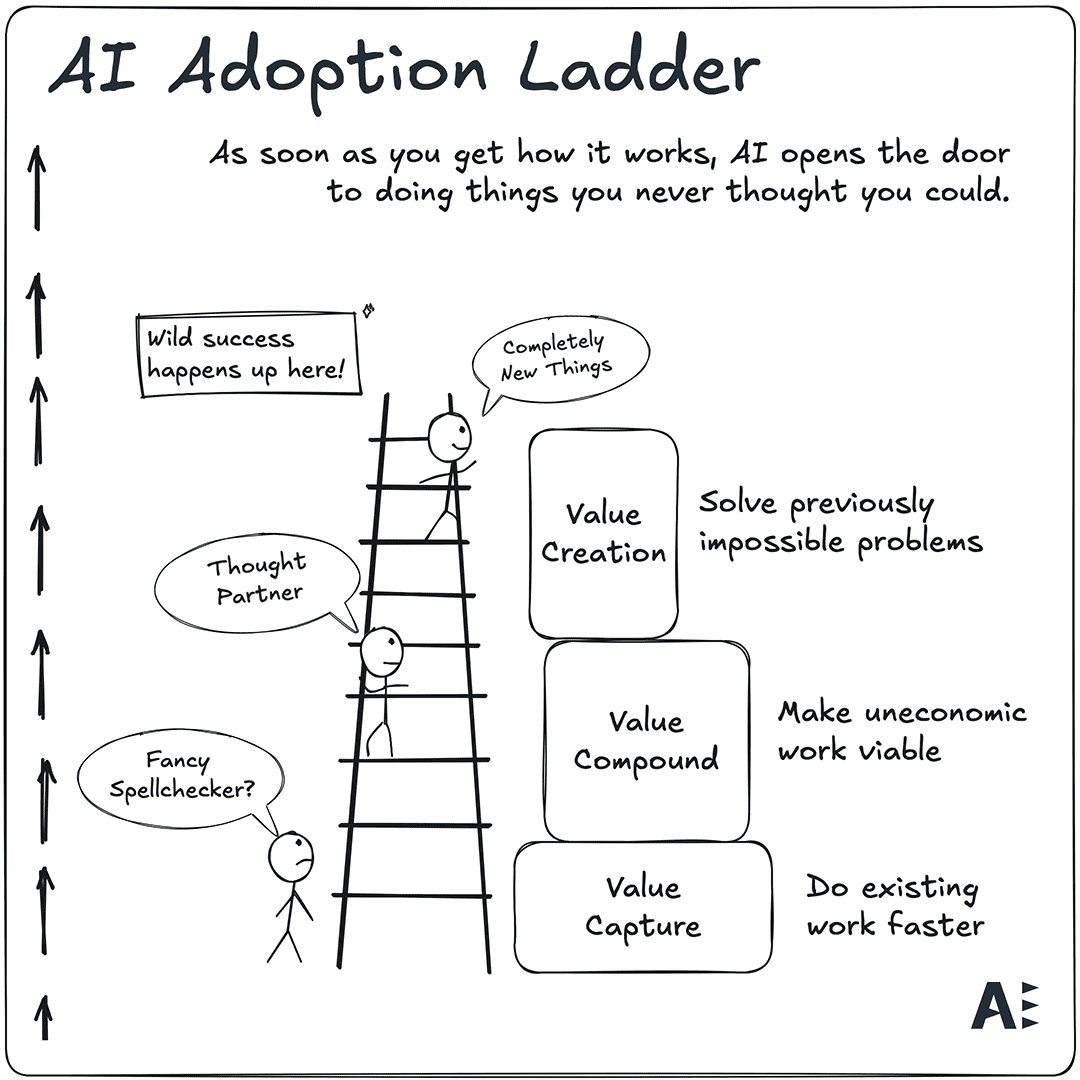The AI Adoption Ladder
Nov 16, 2025
Most People Are Stuck on the Bottom Rung of the AI Ladder
We’re still early in the wave of AI adoption, and what’s striking is how many people are camped on the very bottom rung of the value ladder. Not because they’re not curious, or not willing, but because they’re treating AI as a first-orderchange, a tool to help them do the same work they’ve always done, only faster.
That’s natural. Every new technology wave starts like this. But if you stay there, you miss the entire point, and all the real value.
Let’s break it down.
First-order change: doing the old thing a bit quicker
This is where most teams sit today.
It’s the mindset of:
- “How can I write this document faster?”
- “How do I automate this tedious bit of work?”
- “How do I get AI to help me do what I already do?”
You can get some nice wins here. Time savings. Better flow. Fewer bottlenecks. But the world doesn’t really change. You’ve just put a motor on the same old bicycle.
And this is exactly where people get stuck.
Second-order change: questioning whether the work even needs to exist
The real shift, the one that changes a team’s trajectory, happens when you realise AI isn’t just a tool for productivity. It’s a tool that lets you rethink the underlying work.
Second-order change means the work itself morphs.
A simple example I use a lot:
Most people start by asking:
“How can AI make it easier for me to create documents?”
That’s first-order.
The second-order perspective is:
“Why am I creating documents for humans at all?”
In an AI-enabled environment, you’re often not producing human-consumable artefacts any more. You’re designing structured knowledge for the AI, and humans interact with the AI to get exactly what they need, when they need it.
That’s a completely different way of thinking. It removes entire layers of effort. It changes workflows, responsibilities, and the shape of value creation itself.
The AI value ladder: climbing from efficiency to creation
When you map this onto the value ladder, it becomes obvious why some teams accelerate and others stall.
1. Value Capture - doing the old work faster
This is where AI acts like a power tool:
- speed
- automation
- lighter workloads
Useful, but limited.
2. Value Compounding - doing work that was previously uneconomic
AI becomes a thought partner here.
The tasks stay recognisable, but the economics shift. Work that was too expensive or too slow becomes viable. This is where teams start to gain momentum.
3. Value Creation - doing things that weren’t possible before
This is the frontier.
AI helps you:
- explore new models
- build new products
- solve problems you previously didn’t have the capacity to touch
At this point, the old processes often look laughably outdated.
The click: the moment the ladder opens up
Almost everyone I’ve seen “level up” with AI has the same moment.
They realise:
“I’ve been trying to make my old process faster… when I should be asking whether I even need the process at all.”
Once that lands, everything opens up. You start designing work for AI, not just adding AI to work.
You stop looking for faster horses and start inventing the car.
The opportunity is huge - but only if you climb
AI becomes exponentially more valuable the moment you stop trying to recreate yesterday and start exploring what’s now possible. And the teams who make that shift early are the ones who compound value fastest.
Most people are stuck on the bottom rung.
The opportunity is to climb.
Do you want to learn more about AI and how you can leverage it right now? Join the AI revolution by taking our AI Accelerator today.
Get your AI edge
Join the Artificial Intelligence revolution now by subscribing to our newsletter. Access the latest insight, tools, techniques and use cases for AI to give you an edge.
We hate SPAM. We will never sell your information, for any reason.


